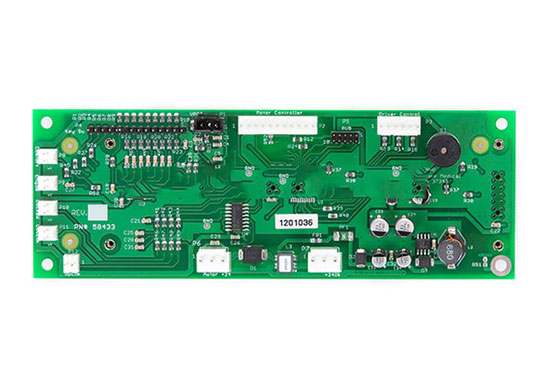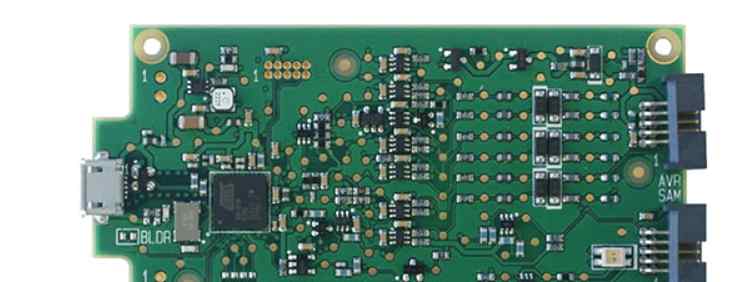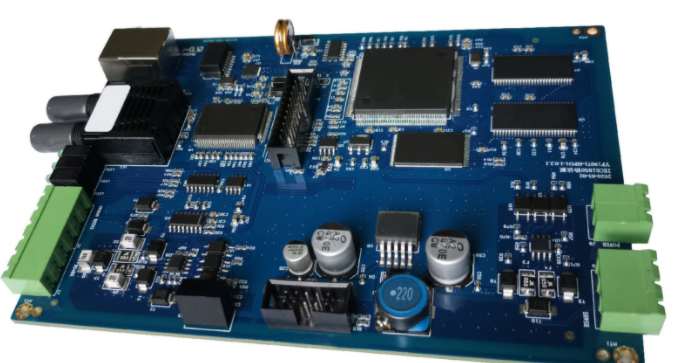
Why do most PCB multilayers have even layers? There are almost no odd levels. PCB board is divided into single side, double side and multilayer. There is no limit to the number of layers. Currently, there are more than 100 PCB layers, while the common PCB layers are four - and six-layer boards. So why do PCB multilayer boards have an even number of layers? Next, Shenzhen PCB board manufacturer -kingford will introduce to you.
Most PCB multilayers are the reason for an even number of layers
Relatively speaking, even layer PCB has more advantages than odd layer PCB.
Odd-numbered PCBS have slightly lower raw material costs than even-numbered PCBS due to the lack of a layer of medium and foil. However, the processing cost of odd-numbered PCB is significantly higher than that of even-numbered PCB. The inner layer has the same machining cost, but the foil/core structure significantly increases the outer layer machining cost.
1. Odd layer PCB needs to add non-standard laminating core bonding technology on the basis of core structure technology. Plants that add foil to the outside of the core structure are less productive than those that do. Prior to lamination bonding, the outer core requires additional processing, which increases the risk of scratches and etching errors.
2, the balance structure to avoid bending. The best reason to design a PCB without odd layers is that the odd layers of the board are prone to bending. When the PCB is cooled after the multilayer circuit bonding process is completed, different laminating tension causes the PCB to bend as the core structure and foil structure are cooled. As the board thickness increases, the risk of bending is greater for composite PCBS with two different structures. The key to eliminate circuit board bending is to use balanced lamination. Although bent PCBS meet the specifications to a certain extent, subsequent processing efficiency will be reduced, resulting in increased costs. Due to the need for special equipment and technology in the assembly process, the placement accuracy of parts will be reduced, thus affecting the quality.
In other words, it is easier to understand: four-layer boards are easier to control than three-layer boards in the PCB process. Mainly in terms of symmetry, the warpage of four-ply board can be controlled below 0.7% (ipc600 standard), but when the size of three-ply board is large, the warpage will exceed this standard, which will affect the reliability of SMT patches and the whole product, so the chief designer does not design odd ply board. Even if an odd-numbered layer implements this function, it will be designed as a false even-numbered layer, i.e., 6 for 5 layers and 8 for 7 layers.
For the above reasons, most PCB multilayers are designed with even layers and fewer odd layers.

2. Key points of high frequency PCB design and layout
The rapid development of science and technology determines that all enterprises need to improve, among which PCB depends on science and technology, naturally must not lag behind, so the layout of high frequency PCB has become the key point to be discussed when we design PCB high frequency board
High frequency PCB design layout points
(1) High-frequency circuits tend to have high integration and high density PCB design wiring. The use of multilayer board is not only necessary for PCB design and wiring, but also an effective means to reduce interference.
(2) The less lead bending between the pins of the high-speed circuit device, the better. The lead of PCB design wiring of high frequency circuit is preferred to be solid line, which needs to be wound, and can be folded at 45° or circular fold. In order to meet this requirement, the external transmission and mutual coupling of high-frequency signals can be reduced.
(3) The shorter the lead between the pins of the high-frequency circuit device, the better.
(4) The less alternations between the wiring layers between the pins of the high-frequency circuit device, the better. By "minimizing layer crossing", we mean using as few through-holes (Via) as possible during component connection. It is estimated that one through-hole can bring a distributed capacitance of about 0.5 pF. The number of holes is reduced. Can greatly increase the speed.
(5) The PCB design and wiring of high-frequency circuit should pay attention to the "cross interference" introduced by parallel lines of signal lines. If parallel distribution cannot be avoided, a large area of "ground" can be placed on the back of parallel signal lines to greatly reduce interference. Parallel cabling in the same floor is almost inevitable, but in two adjacent floors, the direction of the cabling must be perpendicular to each other.
(6) Grounding measures surrounding particularly important signal lines or local units, i.e. drawing the outer outline of the selected object. Using this feature, so-called "packet" processing can be performed automatically on the selected important signal lines. Of course, for high-speed systems, it is also very beneficial to use this capability for local processing of components such as clocks.
(7) All types of signal wiring can not form a loop, and the ground wire can not form a current loop.
(8) A high-frequency decoupling capacitor shall be placed near each integrated circuit block.
(9) High-frequency turbulence links should be used when connecting analog and digital ground wires to common ground wires. In the actual assembly of high-frequency turbulent chains, high-frequency ferrite beads passing through the center hole are often used and are not usually represented in circuit schematics, and the resulting netsheet does not include such components, whose presence will be ignored by PCB design wiring. In response to this reality, it can be used as an inductor in a schematic, and the component package is defined separately in the PCB component library and manually moved to a suitable location near the convergence point of the common ground wires before the PCB is designed for wiring.
(10) The analog circuit and the digital circuit should be arranged separately. After independent PCB design wiring, the power supply and ground wire should be connected at one point to avoid interference with each other.
(11) Before connecting the DSP off-chip program memory and data memory to the power supply, the filter capacitor should be added and placed as close as possible to the chip power supply pin to filter out the power supply noise. In addition, it is recommended to mask around DSP and off chip program memory and data memory to reduce external interference.
(12) Off-chip program memory and data memory should be placed as close to the DSP chip as possible. At the same time, the layout should be reasonable so that the length of data lines and address lines are basically the same, especially when there are multiple memories in the system, the clock line of each memory should be considered. Clock input distance is equal, or a separate programmable clock driver chip can be added. For DSP system, the external memory with the same access speed as DSP should be selected. Otherwise, the high speed processing capability of DSP cannot be fully utilized. DSP instruction cycles are nanoseconds, so the most common problem in DSP hardware systems is high-frequency interference. Therefore, when making the printed circuit board (PCB) of DSP hardware system, special attention should be paid to the address line and data line. Signal cables should be connected correctly and reasonably. When connecting cables, make the high-frequency cables short and thick, and keep them away from easily interfered signal cables, such as analog signal cables. When the circuit around the DSP is more complex, it is recommended that the DSP and its clock circuit, reset circuit, off chip program memory and data memory form a minimum system to reduce interference.
The above is about the high frequency PCB design and layout points to pay attention to the introduction, kingford Electronics is a professional PCB design company engaged in electronic products layout design (layout design), mainly undertake multi-layer, high density PCB design and circuit board design proofing business. With an average of more than 10 years of work experience in PCB design team, skilled use of market mainstream PCB design software, professional and efficient communication to ensure the progress of PCB design, help you to seize the market opportunity earlier!









